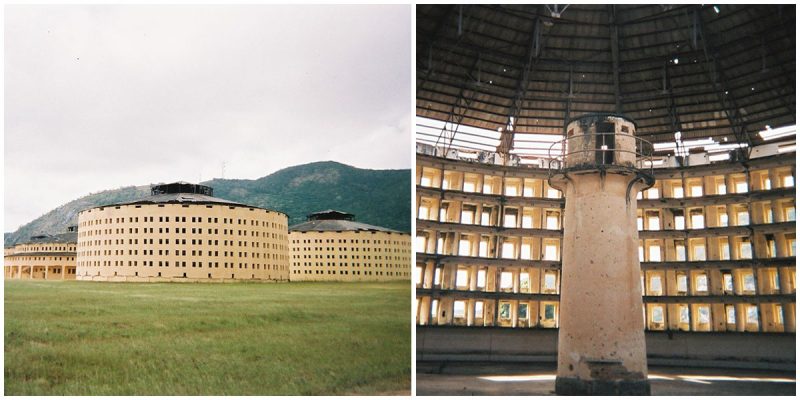Presidio Modelo (Model Prison) was a former “model prison” of Panopticon design, located on the Isla de la Juventud in Cuba, built between 1926 and 1931, during the repressive regime of Gerardo Machado.
The Panopticon is a type of prison building designed by English philosopher and social theorist Jeremy Bentham in 1785.
The concept of the design simple: The cells are built at the edge of a circular building and a tower in the middle allows the watchmen to observe all cells from the same position.
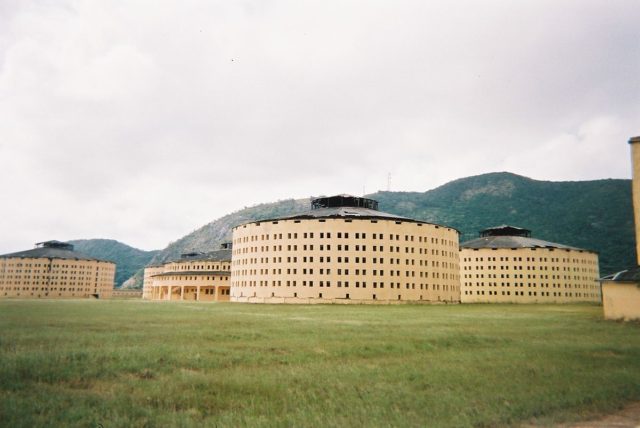
Although most prison designs have included elements of surveillance, the essential elements of Bentham’s design were not only that the custodians should be able to view the prisoners at all times.
Including times when they were in their cells, but also that the prisoners should be unable to see the custodians, and so could never be sure whether or not they were under surveillance.
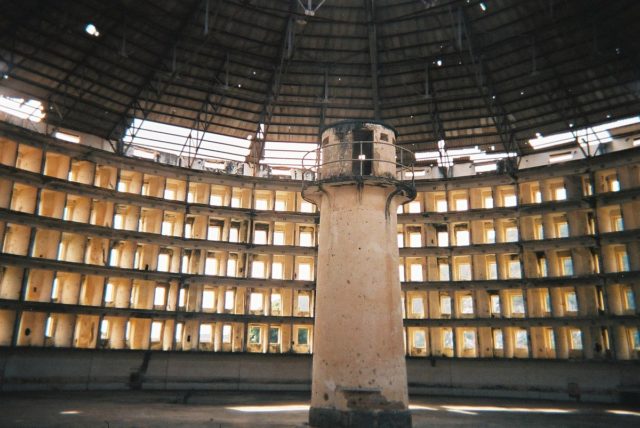
Taken from a series of letters written in 1787 by Jeremy Bentham:
The general ideas of it are: The building is circular, the apartments of the prisoners occupy the circumference. You may call them, if you please, the cells and these cells are divided from one another.
The prisoners by that means secluded from all communication with each other, by partitions in the form of radii issuing from the circumference towards the centre, and extending as many feet as shall be thought necessary to form the largest dimension of the cell […]
Though perhaps it is the most important point is that the persons to be inspected should always feel themselves as if under inspection, at least as standing a great chance of being so, yet it is not by any means the only one.
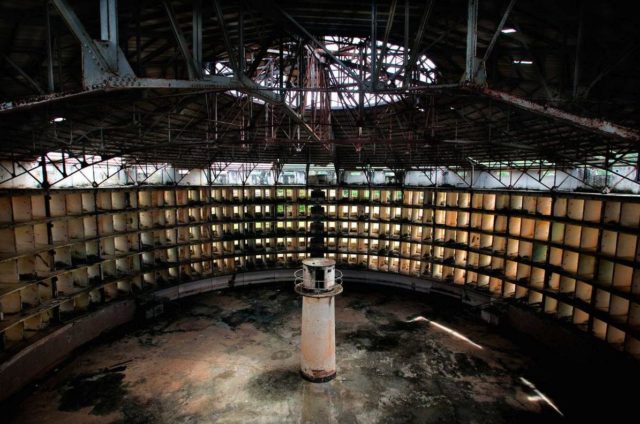
The five circular blocks, with cells constructed in tiers around central observation posts, were built with the capacity to house up to 2,500 prisoners.
Most of the survivors of the rebel attacks on Moncada Barracks, including Fidel Castro, and his brother, Raul Castro, were imprisoned there, from 1953 to 1955.
After Fidel Castro’s revolutionary triumph in 1959, Presidio Modelo was used to jail political dissidents, counter-revolutionaries, homosexuals, Jehovah’s Witnesses, and anyone else considered unfit or an enemy to the new norms and dictates of the Socialist Cuban State.
At one point there were 6,000 to 8,000 political prisoners in Presidio Modelo.
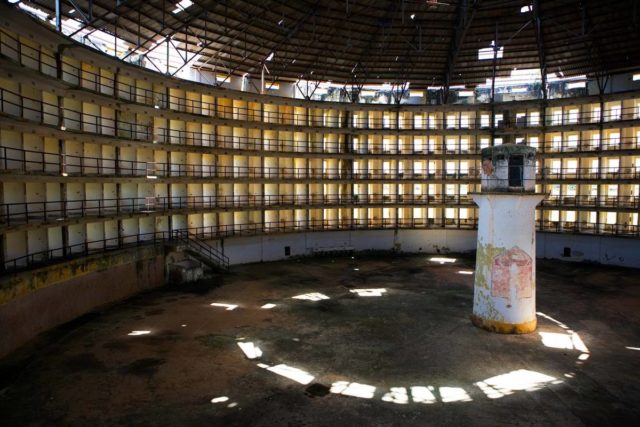
In 1961, riots and hunger strikes broke out due to overcrowding, and finally in 1967, Presidio Modelo was closed down by the government.
The prison now serves as a museum and is declared a national monument, and the old administration building now serves as a school and research center.
